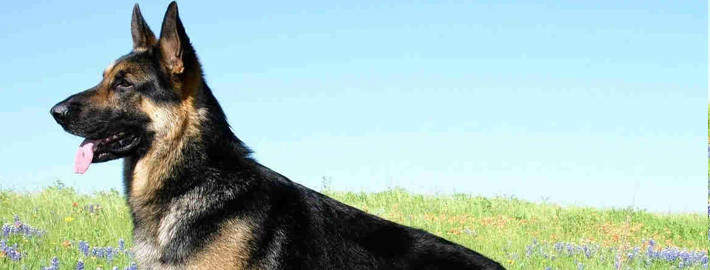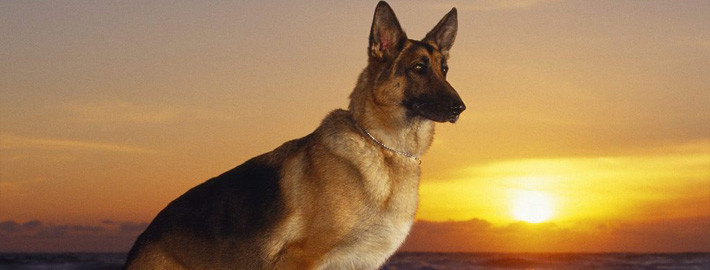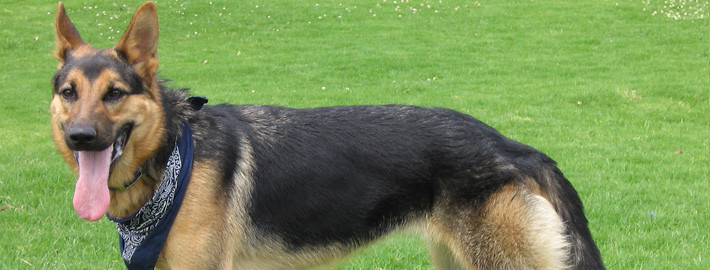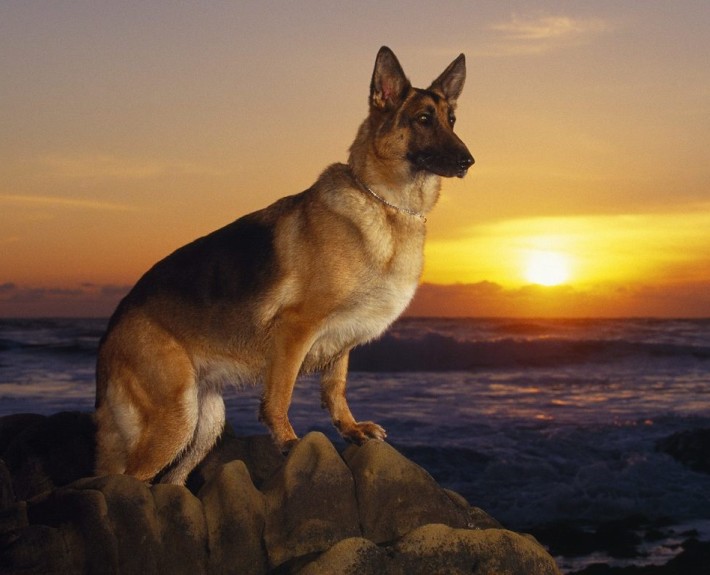What makes the German Shepherd Dog Unique?
The German shepherd dog has an outline of smooth curves on a body that is longer than it is tall. It is strong, agile and substantial. Its gait is exceptionally outreaching and elastic, covering the ground in great strides. It has a double coat, with the outer coat consisting of dense, straight or slightly wavy, harsh, close lying hair of medium length. Among the most intelligent of breeds, the German shepherd dog is so intent on its mission — whatever that may be — that it is virtually unsurpassed in working versatility. It is utterly devoted and faithful. Aloof and suspicious toward strangers, it is protective of its home and family. It can be domineering. It can be aggressive toward other dogs, but it is usually good with other pets.
Breed Groups
Page Contents
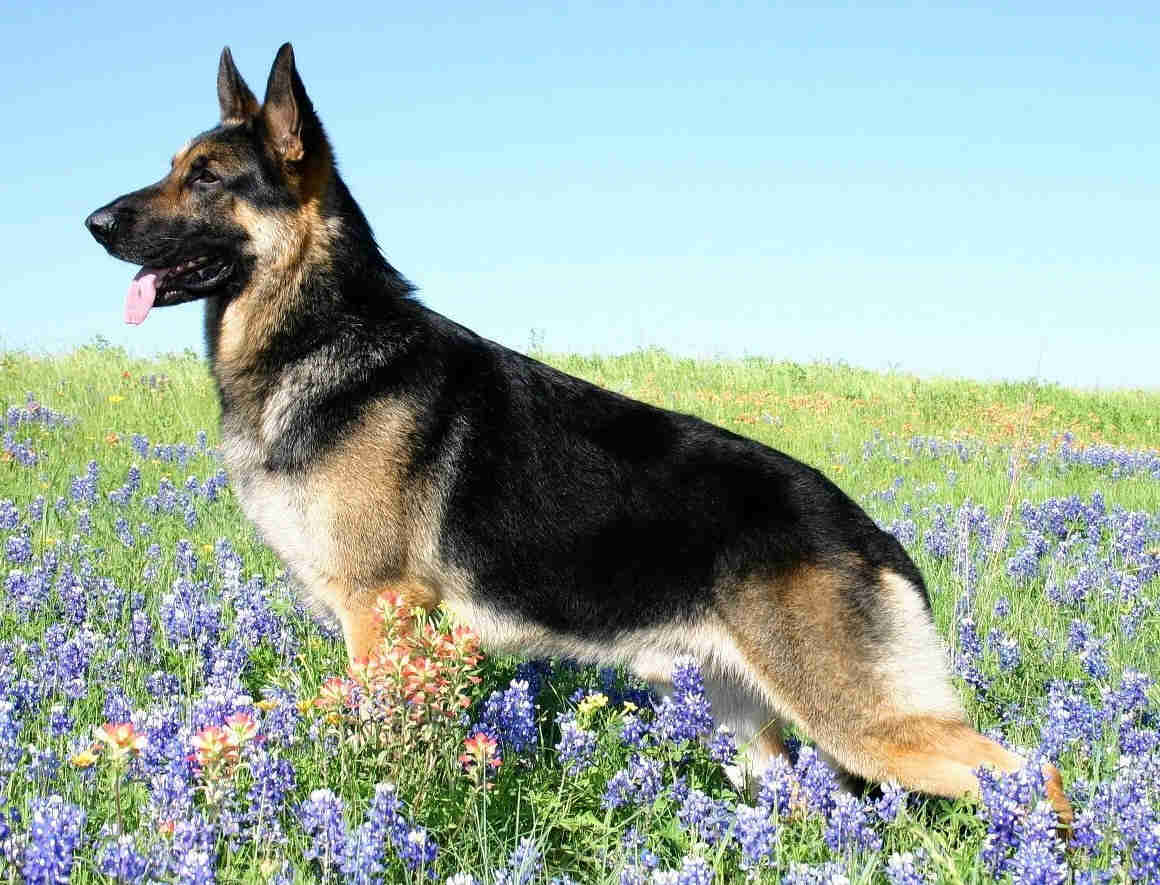
Is the German Shepherd Dog Right For You?
Energetic and fun-loving, the breed is very fond of children once a relationship is established. He is a loyal family pet and a good guard dog, the ideal choice for many families. He requires regular exercise and grooming.
Learn more about purchasing a German Shepherd Dog.
*Herding Group; AKC recognized in 1908.
*Ranging in size from 22 to 26 inches tall at the shoulder.
*Herding, police work.
In 5 Words
- Watchful
- Curious
- Loyal
- Alert
- Obedient
Characteristics
Learn About the German Shepherd Dog
Description
The German Shepherd Dog is well proportioned and very strong. The GSD has a sturdy, muscular, slightly elongated body with a light, solid bone structure. The head should be in proportion to its body, and the forehead a little rounded. The nose is most often black, however, blue or liver still do sometimes occur, but are considered a fault and cannot be shown. The teeth meet in a strong scissors bite. The dark eyes are almond-shaped, and never protruding. The ears are wide at the base, pointed, upright and turned forward. The ears of puppies under six months may droop slightly. The bushy tail reaches below the hocks and hangs down when the dog is at rest. The front legs and shoulders are muscular and the thighs are thick and sturdy. The round feet have very hard soles. There are three varieties of the German Shepherd: double coat, plush coat and longhaired coat. The coat most often comes in black with tan, sable or all black, but also can come in white, blue and liver, but those colors are considered a fault according to most standards. The white GSD dogs are recognized as a separate breed by some clubs and are being called the American White Shepherd. A piebald color has also occurred in a single GSD bloodline that is now being called a Panda Shepherd. A Panda is 35% white the remainder of color is black and tan, and has no white German Shepherds in its ancestry.
Short History of the German Shepherd Dog
The German Shepherd over the years has served in many different capacities: police dog, guide dog, guard dog, war dog, explosives- and narcotics-detecting dog, search-and-rescue dog, show dog, and most notably as a shepherd. Although it slightly resembles a wolf, it is actually a recently developed breed and no more related to the wolf than any other dog breed. Developed primarily for the purpose of guarding and herding a shepherd’s flocks, there have been few other breeds with such a versatile repertoire.
In 1899, the Verein für Deutsche Schäferhunde (or roughly translated into the Society for the German Shepherd Dog) was formed to advance the German Shepherd Dog’s breed standard. They sought a herding dog that could perform a variety of chores which required intelligence, athleticism, and courage. Of course, the German Shepherd proved to be just what they needed, and with subsequent breeding, its abilities as a fearless and astute companion and guardian were perfected.
Temperament
The German Shepherd is very protective and devoted to its family and home, maintaining a suspicious and aloof demeanor around strangers. It can be dominating and assertive towards dogs, though it is normally friendly with other pets in the home. The German Shepherd is an immensely versatile dog, displaying a keen intelligence while dutifully performing its tasks.
Caring for Your German Shepherd Dog
General Health
The German Shepherd has an average lifespan of between 10 to 12 years. It is, however, susceptible to some serious health conditions like elbow dysplasia and canine hip dysplasia (CHD), as well as minor problems like cardiomyopathy, hemangiosarcoma, panosteitis, von Willebrand’s Disease (vWD), degenerative myelopathy, cauda equina, malignant neoplasms, pannus, hot spots, skin allergies, gastric torsion, cataract, and perianal fistulas. This breed is also prone to a fatal fungal infection due to the Aspergillus mold. Because of these susceptibilities German Shepherds, like most other dogs, need to be seen by a veterinarian for routine checkups. There they will undergo hip, elbow blood, eye and other tests.
Grooming & Bathing
The German Shepherd can live outdoors in cool or temperate climates, but enjoys living indoors too. Frequent training or exercise sessions are essential for keeping its mind and body active, and because the German Shepherd sheds throughout the year, its coat should be brushed once or twice a week to encourage turnover as well as to minimize buildup in the home.
Exercise & Training
his breed needs daily mental and physical challenges. It enjoys a good exercise session as well as learning session. It can live outside in temperate to cool climates, but it is family-oriented and does equally well as a house dog.

